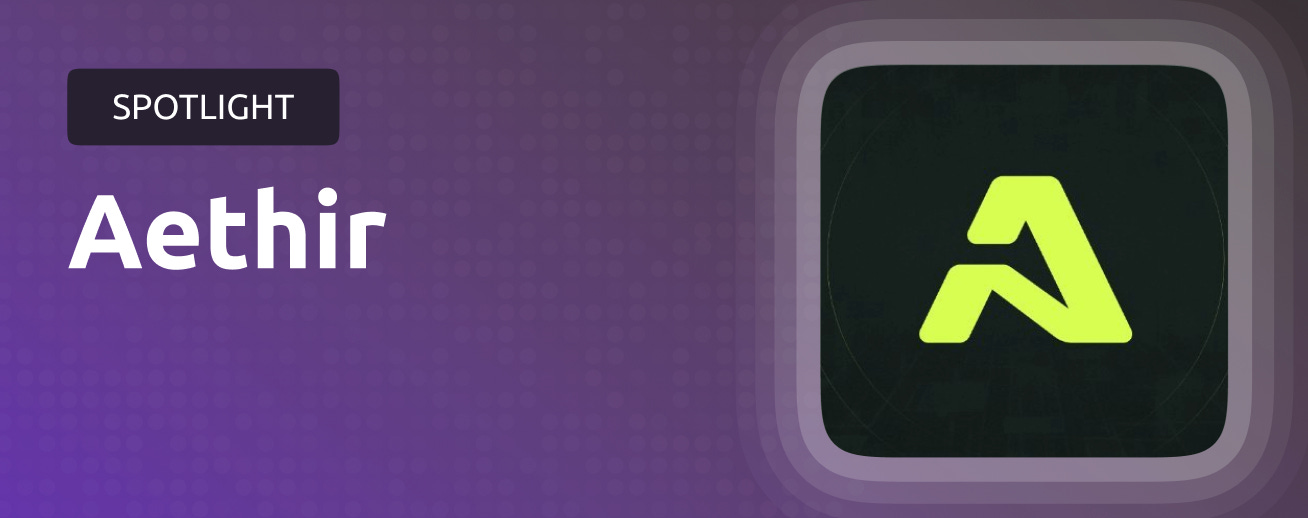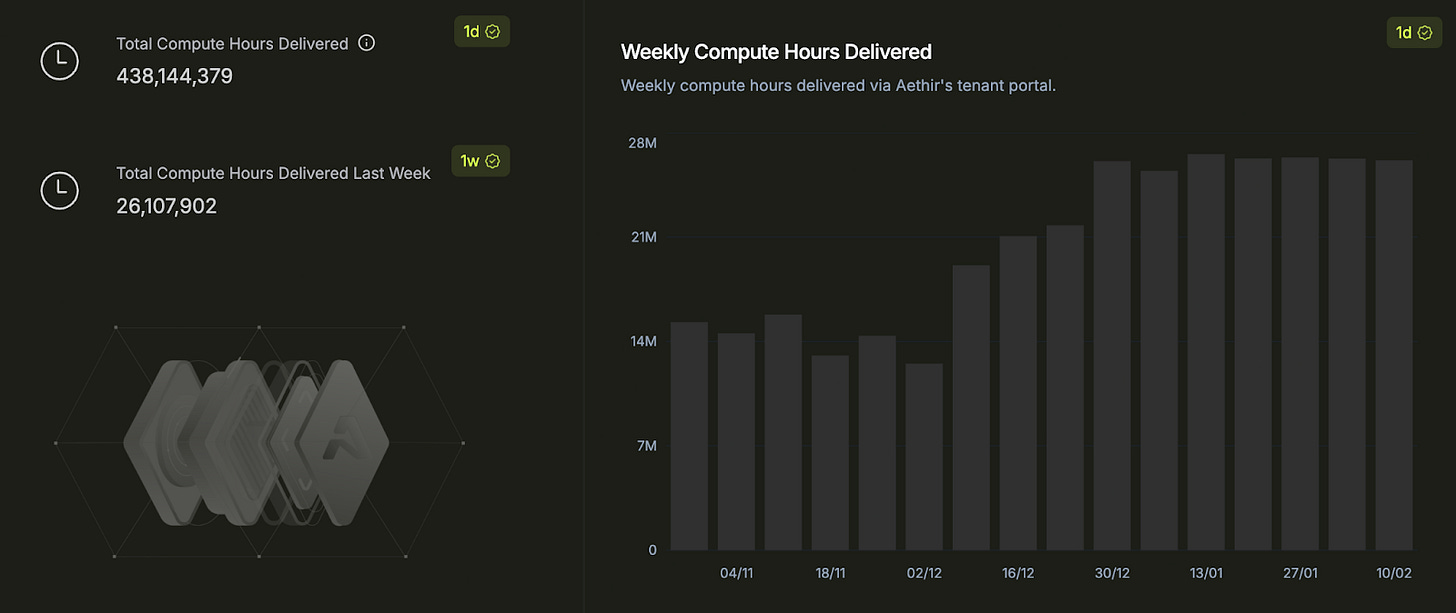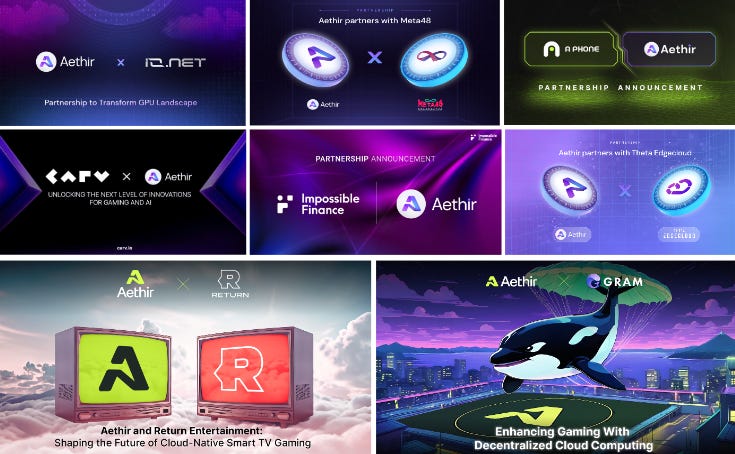In 2024, AI was the dominant sector to watch, in the first half with decentralized compute providers like Aethir, and later on, the emergence of the AI agents narrative. Right now the AI agents sector is forming new lows in marketcap, as markets decline in light of $LIBRA. However, decentralized compute as a sector isn’t going anywhere, and the fundamentals look to be growing stronger.
Demand for compute, whether it be for AI model training, inference, gaming, or any other purpose, is anticipated to grow exponentially even as the use of compute becomes more efficient. As evidenced by initiatives like Project Stargate, the $500B AI investment scheme announced by President Trump, the rollout of AI infrastructure will likely continue at a breakneck pace.
Crypto can have its own role to play here–the likes of Aethir can benefit from an all-around increase in demand for compute as new use cases for this resource are unlocked for individuals and enterprises. In today’s edition, we’ll discuss Aethir’s value add, recent updates, and more…
Background on Aethir
Aethir is a decentralized cloud computing platform, providing a market for buyers and sellers of compute. It allows users to rent out their GPU power in a GPU-as-a-Service (GPUaaS) fashion. On the other side, users can then rent GPU servers according to their needs: this process is made more affordable and accessible for renters, due to the method in which Aethir unifies compute from various sources into one network.
At its core, Aethir leverages underutilized GPU resources from data centers, enterprises, cryptocurrency miners, and individual consumers. By pooling idle GPU capacity, Aethir not only increases overall resource utilization but also democratizes access to high-performance compute resources. Compute buyers include gaming and AI-related ventures, among other compute-intensive sectors.
By now, many market participants are familiar with the decentralized compute sector, though they might not have kept up with how this area of crypto has grown over the course of last year and into 2025. Aethir specifically has expanded its infrastructure significantly, now boasting over 400K enterprise-grade GPUs across 95 countries.
When it comes to demand for this infrastructure rollout, Aethir has delivered over 430M compute hours. Demand has increased considerably toward the end of 2024 and has remained high until now. This has culminated in over $32M in network revenue from these compute purchases, resulting in an Annual Recurring Revenue (ARR) of ~$110M at this point.
It’s worth noting that the revenue model of Aethir and other decentralized compute providers differs substantially from traditional cloud providers. Aethir’s $ATH token is used to facilitate transactions as users rent compute power from node operators. Because of the token model of Aethir, its revenues can’t be compared 1:1 with traditional cloud providers like AWS, Google Cloud, Microsoft Azure, etc.
Still, the amount of compute purchased thus far demonstrates significant demand for these services, and this demand has been consistently increasing, seemingly uncorrelated with the broader crypto market sentiment. The nature of Aethir’s core business and the fact that demand for it can potentially be detached from the cyclical nature of crypto can make it a project to watch during downturns.
Part of what allows Aethir to stay ahead of the curve and see consistent increases in usage WoW is an emphasis on distribution. This is made apparent by Aethir’s $100M ecosystem fund, which offers builders in the AI and gaming space grants and subsidies to finance their compute costs.
Most recently, Aethir has now doubled down on the Solana ecosystem. This shouldn’t come as unexpected; Aethir had already supported several high-profile projects in the AI agents space (including ElizaOS and HeyAnon) via its ecosystem fund and has relationships with various other projects across sectors. This new expansion reflects additional support not only in AI, but also gaming, RWAs, and DeFi.
Aethir’s strong emphasis on partnerships and ecosystem even extends beyond Web3, and into Web2, which is very relevant for the service that Aethir provides. In 2023, Aethir joined Nvidia’s Inception program, which is designed to give direct support to fast-growing startups, allowing them to leverage Nvidia’s network, technological domain expertise, and more. Outside of this, Aethir has relationships with all sorts of Web2 companies, including those in the gaming and metaverse sector, other cloud service providers, and more.
On the ecosystem front, Aethir also introduced Aethir Forge, the next evolution of their ecosystem efforts. Aethir Forge will focus on growing adoption in the gaming and AI sectors, as well as Web3 more broadly. Events and hackathons will be used to grow Aethir’s developer base across the globe in key regions. This will be done through a boots-on-the-ground approach, recruiting engaged community members in specific regions to help with the onboarding of users, developers, and compute hosts with referral incentives used as a rewards mechanism.





